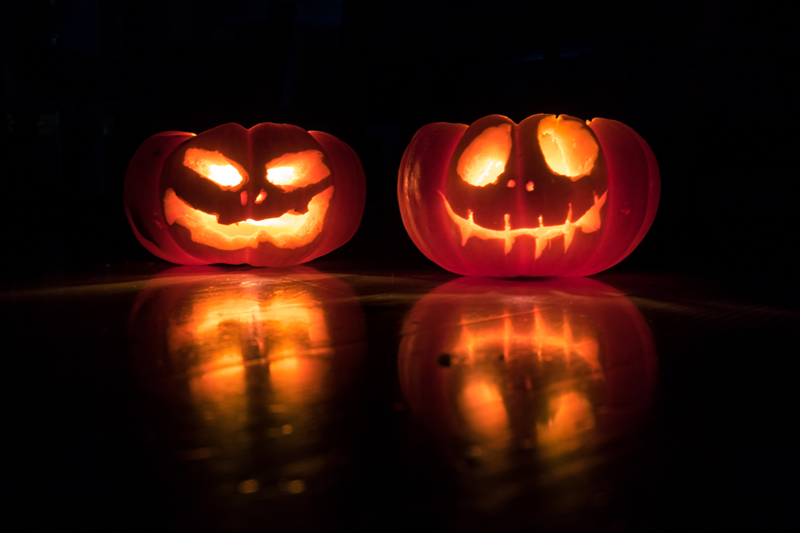Think trick-or-treating might not be the best idea during a global pandemic? You're right: You get a candy bar — just don't accept it from someone else's house.
The Centers for Disease Control has released their guidelines for how to stay safe while celebrating various fall holidays from Halloween to Día de los Muertos and Thanksgiving.
The CDC has ranked various traditional activities from low risk to high risk. For example, having a virtual Halloween costume contest is a low-risk activity whereas going to a crowded haunted house and/or roaming door-to-door accepting food items from strangers are both high-risk.
The organization also wisely notes: "If you may have COVID-19 or you may have been exposed to someone with COVID-19, you should not participate in in-person Halloween festivities and should not give out candy to trick-or-treaters." (Another confectionary concern to add to razor blades hidden in Tootsie Rolls: COVID candy.)
Here are the risk rankings for Halloween activities (per the CDC):
Low Risk
- Carving or decorating pumpkins with members of your household and displaying them
- Carving or decorating pumpkins outside, at a safe distance, with neighbors or friends
- Decorating your house, apartment, or living space
- Doing a Halloween scavenger hunt where children are given lists of Halloween-themed things to look for while they walk outdoors from house to house admiring Halloween decorations at a distance
- Having a virtual Halloween costume contest
- Having a Halloween movie night with people you live with
- Having a scavenger hunt-style trick-or-treat search with your household members in or around your home rather than going house to house
Medium Risk
- Participating in one-way trick-or-treating where individually wrapped goodie bags are lined up for families to grab and go while continuing to social distance (such as at the end of a driveway or at the edge of a yard). If you are preparing goodie bags, wash your hands with soap and water for at least 20 second before and after preparing the bags.
- Having a small group, outdoor, open-air costume parade where people are distanced more than 6 feet apart
- Attending a costume party held outdoors where protective masks are used and people can remain more than 6 feet apart. (A costume mask is not a substitute for a cloth mask.)
- Going to an open-air, one-way, walk-through haunted forest where appropriate mask use is enforced, and people can remain more than 6 feet apart. If screaming will likely occur, greater distancing is advised. The greater the distance, the lower the risk of spreading a respiratory virus.
- Visiting pumpkin patches or orchards where people use hand sanitizer before touching pumpkins or picking apples, wearing masks is encouraged or enforced, and people are able to maintain social distancing.
- Having an outdoor Halloween movie night with local family friends with people spaced at least 6 feet apart. Lower your risk by following CDC’s recommendations on hosting gatherings or cook-outs.
High Risk
- Participating in traditional trick-or-treating where treats are handed to children who go door to door
- Having trunk-or-treat where treats are handed out from trunks of cars lined up in large parking lots
- Attending crowded costume parties held indoors
- Going to an indoor haunted house where people may be crowded together and screaming
- Going on hayrides or tractor rides with people who are not in your household
- Using alcohol or drugs, which can cloud judgement and increase risky behaviors
- Traveling to a rural fall festival that is not in your community if you live in an area with community spread of COVID-19
High risk activities for Día de los Muertos?
- Attending large indoor celebrations with singing or chanting
- Participating in crowded indoor gatherings or events
- Having a large dinner party with people from different households coming from different geographic locations
- Using alcohol or drugs, which can cloud judgement and increase risky behaviors
And what about Thanksgiving?
- Going shopping in crowded stores just before, on, or after Thanksgiving
- Participating or being a spectator at a crowded race
- Attending crowded parades
- Using alcohol or drugs, which can cloud judgement and increase risky behaviors
- Attending large indoor gatherings with people from outside of your household
Basically: Don't take candy from strangers, avoid Black Friday and don't have a big dinner party.



